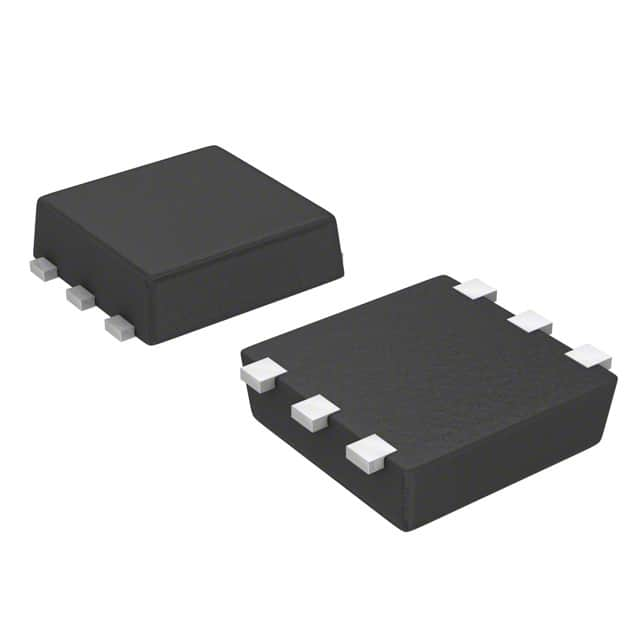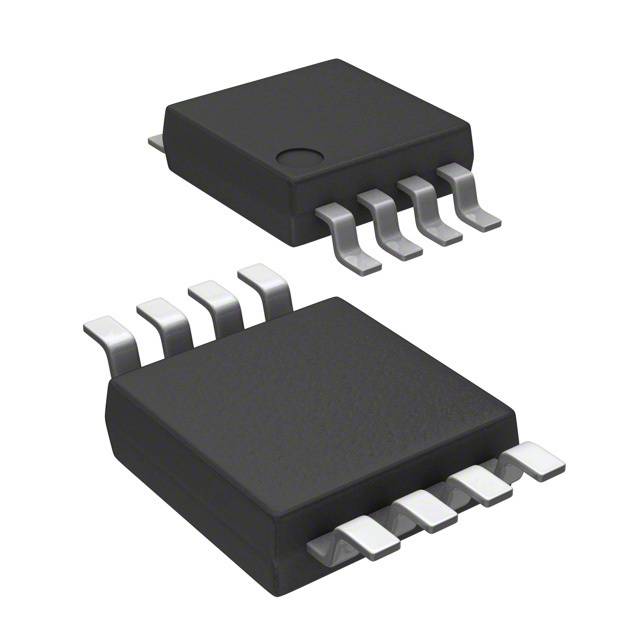Ⅰ. PMIC - Battery Management
Ⅱ. Physical Characteristics of PMIC - Battery Management
Ⅲ. Electrical Characteristics of PMIC - Battery Management
PMIC, short for Power Management Integrated Circuit, refers to a type of integrated circuit designed to manage and control the power supply and energy flow in electronic devices. One important application of PMICs is battery management, which involves controlling the charging, discharging, and overall performance of batteries.

Battery management PMICs, also known as battery management systems (BMS) or battery charger ICs, play a crucial role in ensuring the safe and efficient operation of batteries. They are commonly used in a variety of devices that rely on battery power, including smartphones, laptops, electric vehicles, drones, and more.
Here are some key aspects of PMICs used for battery management:
1.Charging Control: Battery management PMICs provide the necessary circuitry to control the charging process of batteries. They regulate the charging voltage and current to ensure that the battery is charged safely and efficiently. PMICs often support multiple charging modes, such as constant current (CC) and constant voltage (CV) charging, to accommodate different battery chemistries and optimize charging performance.
2.Discharging Control: PMICs for battery management also oversee the discharging process of batteries. They regulate the power flow from the battery to the connected device, maintaining a stable output voltage and managing the power delivery according to the device's requirements.
3.Voltage Regulation: Battery management PMICs include voltage regulation circuits to maintain a stable output voltage during battery charging and discharging. This ensures that the battery and the connected devices receive a consistent and appropriate voltage level for optimal performance and protection against voltage fluctuations.
4.Current Sensing: PMICs used for battery management incorporate current sensing circuits to measure the charging and discharging currents of the battery. Accurate current sensing allows for monitoring the state of the battery, implementing current protection mechanisms, and providing real-time information on the battery's power delivery.
5.Battery Protection: Battery management PMICs integrate various protection features to safeguard the battery and the connected devices. These features can include overvoltage protection (OVP), undervoltage protection (UVP), overcurrent protection (OCP), short circuit protection, and thermal protection. They help prevent potential risks and ensure the safe operation of the battery.
6.State of Charge (SoC) Monitoring: PMICs for battery management often include algorithms and techniques to estimate the battery's state of charge. SoC estimation provides information about the remaining capacity or energy of the battery, allowing users to monitor the battery level accurately and make informed decisions about power usage.
7.Communication Interfaces: Some battery management PMICs incorporate communication interfaces such as I2C (Inter-Integrated Circuit) or SMBus (System Management Bus). These interfaces enable communication between the PMIC and external devices or systems, facilitating battery monitoring, control, and data retrieval.
8.Power Supply Regulation: Battery management PMICs often include voltage regulators to provide stable and regulated power supply voltages for the internal circuitry and charging circuits. These regulators ensure reliable operation and accurate battery management.
Battery management PMICs are essential components in modern electronic devices that rely on batteries. They provide the necessary functionality to control the charging and discharging processes, regulate voltage and current, implement protection mechanisms, monitor the battery's state, and facilitate communication with external systems. By effectively managing batteries, PMICs contribute to improved battery performance, longer lifespan, and enhanced safety.
Physical Characteristics of PMIC - Battery Management
The physical characteristics of PMICs used for battery management can vary depending on the specific device, manufacturer, and application requirements. Here are some common physical characteristics associated with battery management PMICs:
1.Package Type: Battery management PMICs are available in various package types, such as QFN (Quad Flat No-Lead), TSSOP (Thin Shrink Small Outline Package), BGA (Ball Grid Array), or WLCSP (Wafer-Level Chip Scale Package). The package type determines the physical size, pin count, and form factor of the PMIC.
2.Pin Count: Battery management PMICs can have different pin counts, depending on the complexity of the device and the number of input/output connections required for battery management functions.
3.Thermal Dissipation: Battery management PMICs may generate heat during operation due to power dissipation. To ensure proper thermal management, they may incorporate features such as thermal pads, exposed thermal vias, or other mechanisms for efficient heat dissipation.
4.Mounting Options: Battery management PMICs can be mounted on printed circuit boards (PCBs) using surface mount technology (SMT) or through-hole technology (THT), depending on the design requirements and manufacturing processes.
5.Size and Form Factor: Battery management PMICs come in various sizes and form factors to accommodate different design constraints and integration requirements. The physical dimensions can vary based on the specific device and package type.
6.Display and User Interfaces: Some battery management PMICs may include built-in displays or user interfaces, such as LEDs, LCDs, or touchscreens. These interfaces provide visual feedback or allow users to interact with the PMIC for battery status monitoring or configuration.
7.Indicator LEDs: Battery management PMICs often incorporate indicator LEDs to provide visual feedback on the charging status, battery level, or fault conditions. These LEDs can indicate charging in progress, fully charged, low battery, or other relevant information.
8.Protection Features: Battery management PMICs may include protection features, such as input/output overvoltage protection, reverse voltage protection, or short circuit protection. These features ensure the safety and protection of the battery and connected devices.
9.Communication Interfaces: Some battery management PMICs feature communication interfaces, such as I2C (Inter-Integrated Circuit), SPI (Serial Peripheral Interface), or UART (Universal Asynchronous Receiver-Transmitter). These interfaces allow for data transfer and communication with external devices or systems, facilitating battery monitoring, control, and configuration.
10.Power Supply Input: Battery management PMICs typically require a power supply input, which can vary depending on the specific device and application. The input voltage range and input power requirements should be considered during the design and integration process.
It's important to note that the physical characteristics of battery management PMICs can vary based on the manufacturer, product family, and application requirements. It's advisable to refer to the datasheets or product specifications provided by the battery management PMIC manufacturer for detailed information on the physical characteristics of a specific device.

Electrical Characteristics of PMIC - Battery Management
The electrical characteristics of PMICs used for battery management can vary depending on the specific device, manufacturer, and application requirements. Here are some common electrical characteristics associated with battery management PMICs:
1.Input Voltage Range: Battery management PMICs have a specified input voltage range within which they can operate. This range is typically determined based on the power supply voltage requirements of the system or application in which the PMIC is used.
2.Output Voltage Range: PMICs for battery management provide regulated output voltages to ensure proper charging and discharging of batteries. The output voltage range can vary based on the specific device and application requirements.
3.Charging Current: Battery management PMICs control the charging current flowing into the battery during the charging process. The charging current range is typically specified by the PMIC and can be adjusted based on the battery's characteristics and charging requirements.
4.Discharging Current: PMICs used for battery management regulate the discharging current flowing from the battery to the connected devices. The discharging current range is determined based on the PMIC's design and the power requirements of the connected devices.
5.Efficiency: Battery management PMICs aim to achieve high efficiency in power conversion to minimize power losses during charging and discharging processes. The efficiency is typically expressed as a percentage and indicates how effectively the PMIC converts input power to output power.
6.Current Sensing and Monitoring: PMICs for battery management include current sensing circuits to measure and monitor the charging and discharging currents of the battery. Accurate current sensing allows for real-time monitoring of the battery's state and enables protection features, such as overcurrent protection.
7.Voltage Regulation: Battery management PMICs incorporate voltage regulation circuits to maintain a stable output voltage during battery charging and discharging. The voltage regulation helps ensure that the battery and connected devices receive a consistent and appropriate voltage level.
8.Protection Features: Battery management PMICs may include various protection features to safeguard the battery and connected devices. These features can include overvoltage protection (OVP), undervoltage protection (UVP), overcurrent protection (OCP), short circuit protection, and thermal protection.
9.Communication Interfaces: Some battery management PMICs feature communication interfaces, such as I2C (Inter-Integrated Circuit) or SMBus (System Management Bus). These interfaces enable communication between the PMIC and external devices or systems, facilitating battery monitoring, control, and data retrieval.
10.Power Supply Regulation: Battery management PMICs often incorporate voltage regulators to provide stable and regulated power supply voltages for the internal circuitry and charging circuits. These regulators ensure reliable operation and accurate battery management.
Tags:PMIC battery management



